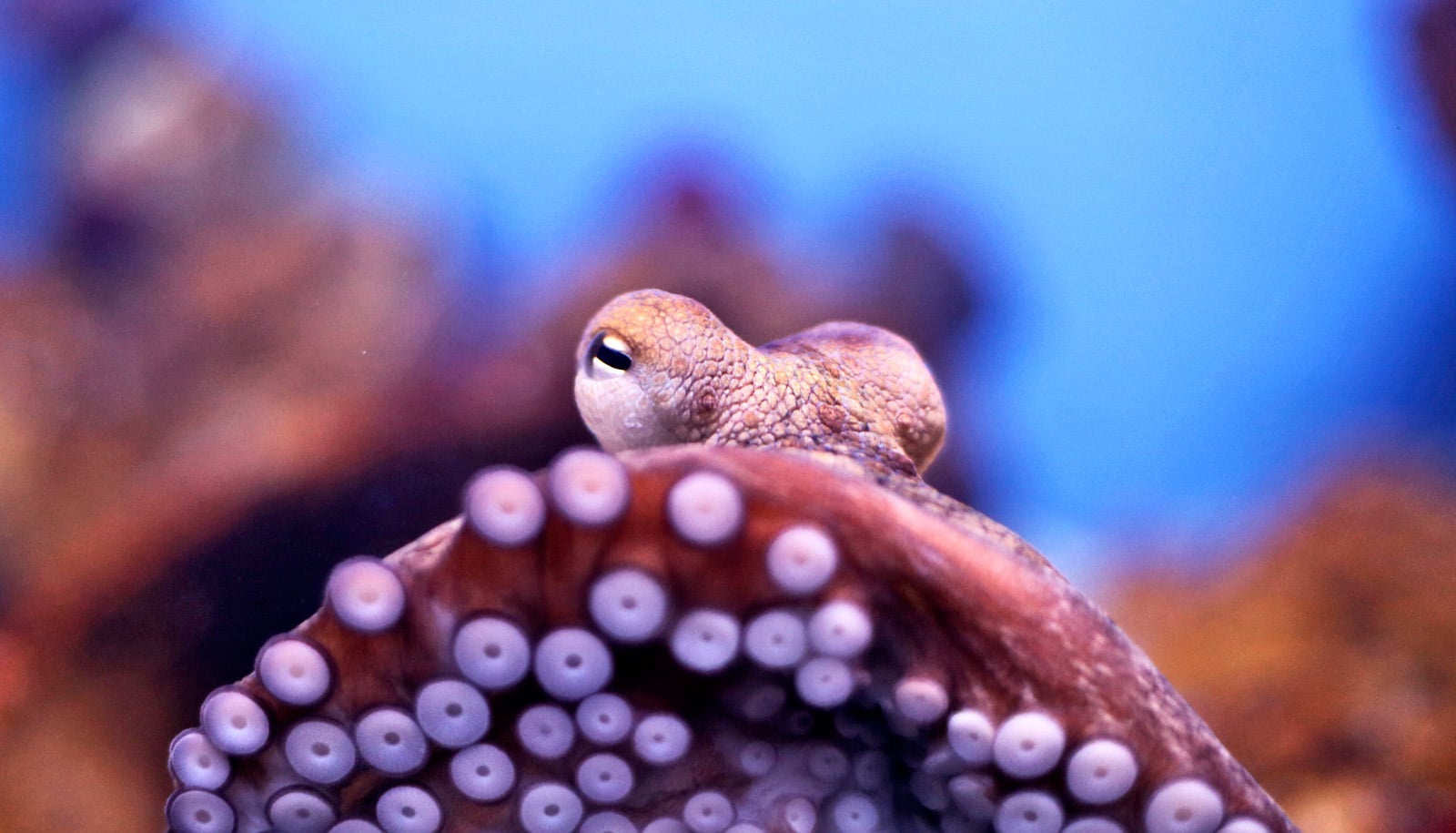
Octopuses and their cephalopod cousins the cuttlefish and the squid are evolutionary oxymorons: big-brained invertebrates that display many cognitive, behavioral, and affective traits once considered exclusive to the higher vertebrates. "This octopus prefers native littleneck clams to Manila clams ," says Roland Anderson, a biologist at the aquarium. Each of her eight arms is about five feet long and lined with 200 suckers, which she uses not only to feel but to taste. Three-year-old Pandora, a giant Pacific octopus at the Seattle Aquarium, weighs about 45 pounds. Had something alarmed or offended him? Perhaps we were both a great mystery to each other.
#Octopus eyes skin#
His skin texture changed from glassy smooth to a fissured moonscape his color changed from mottled brown to livid red-which seemed to signal anger-and he squinted at me. Steve curled into a tight, defensive ball in the corner of the tank.

And I couldn't help feeling as if I were being studied, that a measuring intelligence lay behind that intent eye and exploring arm.įinally, when the arm's fingerlike tip reached my neck, it shot back like a snapped rubber band. I couldn't help feeling as if I was being tasted, and I was, by tens of thousands of chemoreceptors. The arm inched up past my wrist to my shoulder, its suckers momentarily attaching and releasing like cold kisses. Clearly, Steve was looking-his big hooded eye followed me, and a single five-foot-long arm reached out to the hand I held above the water's surface.

Ramirez and Oakley are conducting new experiments that will seek to answer those questions and more.When biologist Roland Anderson of the Seattle Aquarium pulled back the tank's lid, I wasn't sure whether it was to let me get a look at Steve or to let Steve get a look at me. “What kind of behaviors do the different groups share and what kind of behaviors does the skin sensing light underlie?” If they do, Ramirez wants to understand how these two groups are related.“Do they all come from the same ancestral source or did they evolve multiple times?” he asked. Octopuses are not the only marine mollusks whose skin can sense light, but scientists don’t know yet whether the skin of those other animals contains the light-sensitive opsins. “So instead of completely inventing new things, LACE puts parts together in new ways and combinations.” “It looks like the existing cellular mechanism for light detection in octopus eyes, which has been around for quite some time, has been co-opted for light sensing in the animal’s skin and used for LACE,” he explained. “We’ve discovered new components of this really complex behavior of octopus camouflage,” said Oakley, who calls cephalopods the rock stars of the invertebrate world.

Ramirez found rhodopsin - usually produced in the eye - in the sensory neurons on the tissue’s surface.Īccording to Oakley, this new research suggests an evolutionary adaptation. Molecular experiments to determine which proteins were expressed in the skin followed. In order to record the skin’s sensitivity across the spectrum, Ramirez exposed octopus skin to different wavelengths of light from violet to orange and found that chromatophore response time was quickest under blue light. He and his co-author, Todd Oakley, an EEMB professor, dubbed the process Light-Activated Chromatophore Expansion (LACE). This process, Ramirez noted, suggests that light sensors are connected to the chromatophores and that this enables a response without input from the brain or eyes. When the light was turned off, the chromatophores relaxed and the skin returned to its original hue. Its skin is not detecting contrast and edge but rather brightness.”Īs part of the experiment, Ramirez shone white light on the tissue, which caused the chromatophores to expand and change color. “But it can sense an increase or change in light. “Octopus skin doesn’t sense light in the same amount of detail as the animal does when it uses its eyes and brain,” said lead author Desmond Ramirez, a doctoral student in the Department of Ecology, Evolution and Marine Biology (EEMB). The researchers’ findings appear in the Journal of Experimental Biology.

The animal does so by using the same family of light-sensitive proteins called opsins found in its eyes - a process not previously described for cephalopods. The most intelligent, most mobile and largest of all mollusks, these cephalopods use their almost humanlike eyes to send signals to pigmented organs in their skin called chromatophores, which expand and contract to alter their appearance.Ī new study by UCSB scientists has found that the skin of the California two-spot octopus (Octopus bimaculoides) can sense light even without input from the central nervous system. It can change the color, pattern and even texture of its skin not only for purposes of camouflage but also as a means of communication.


 0 kommentar(er)
0 kommentar(er)
